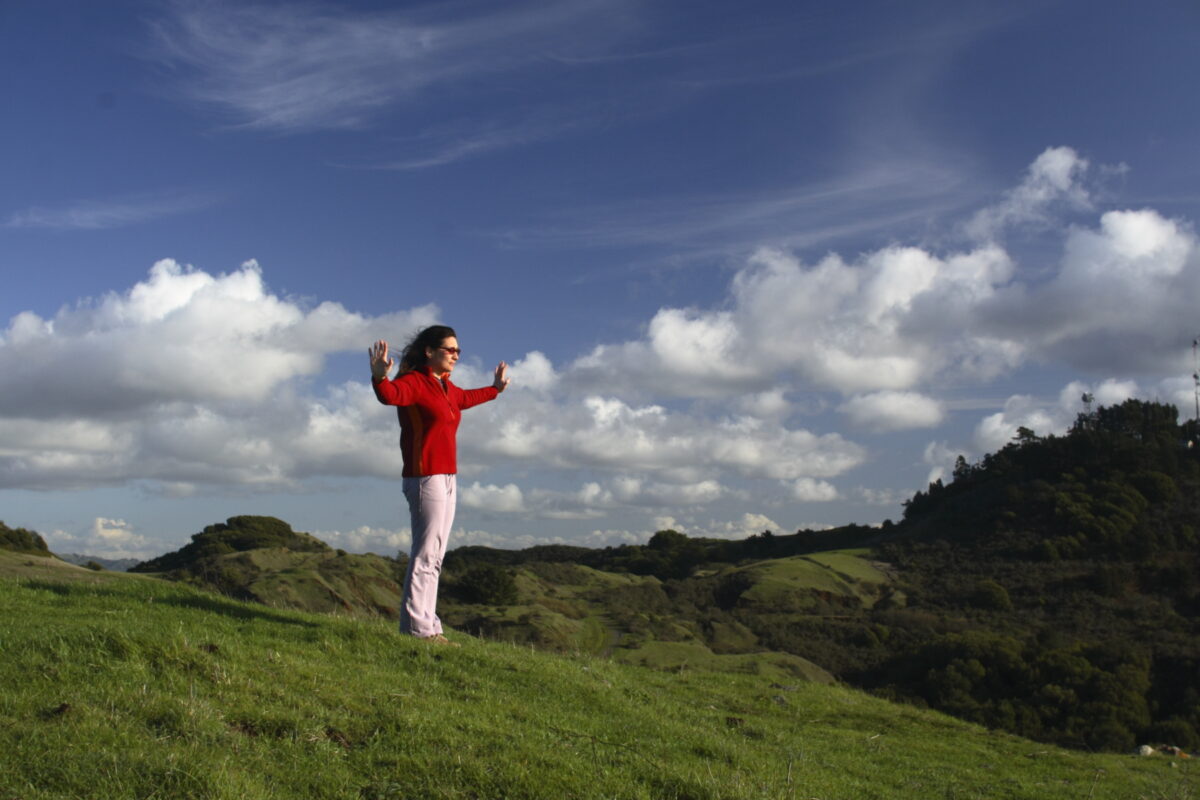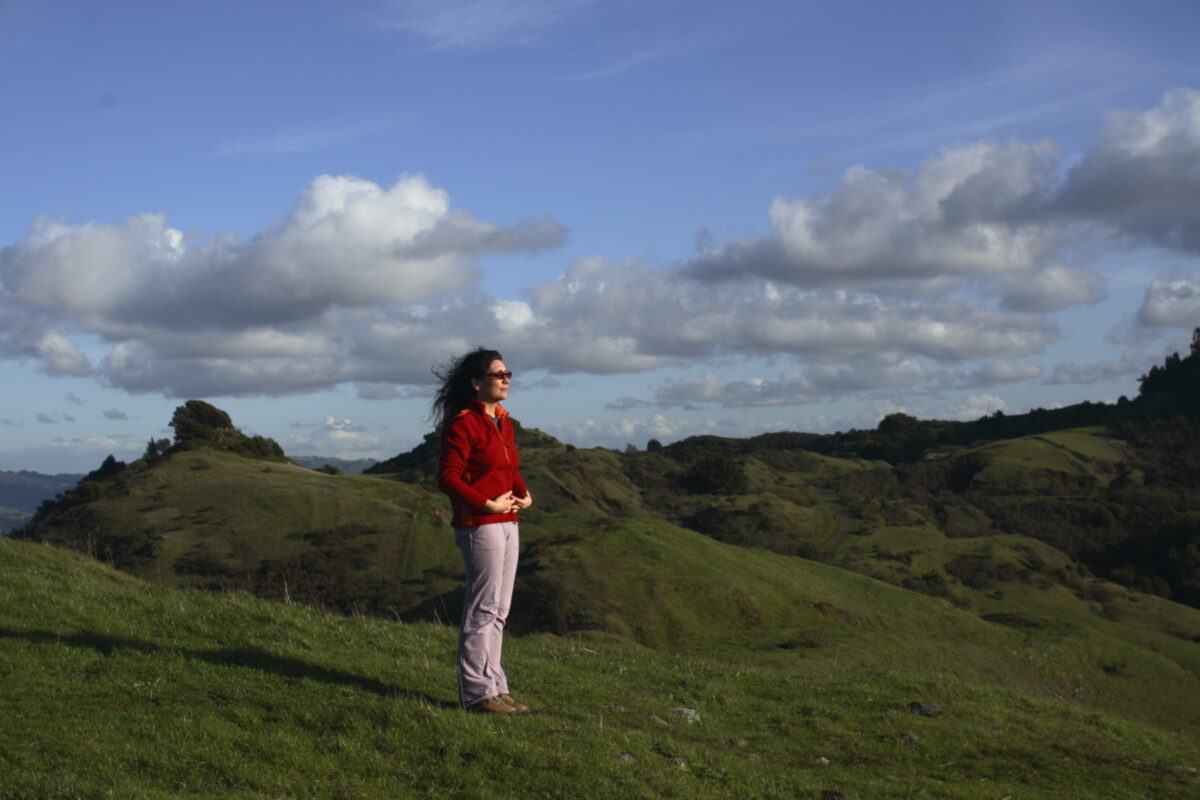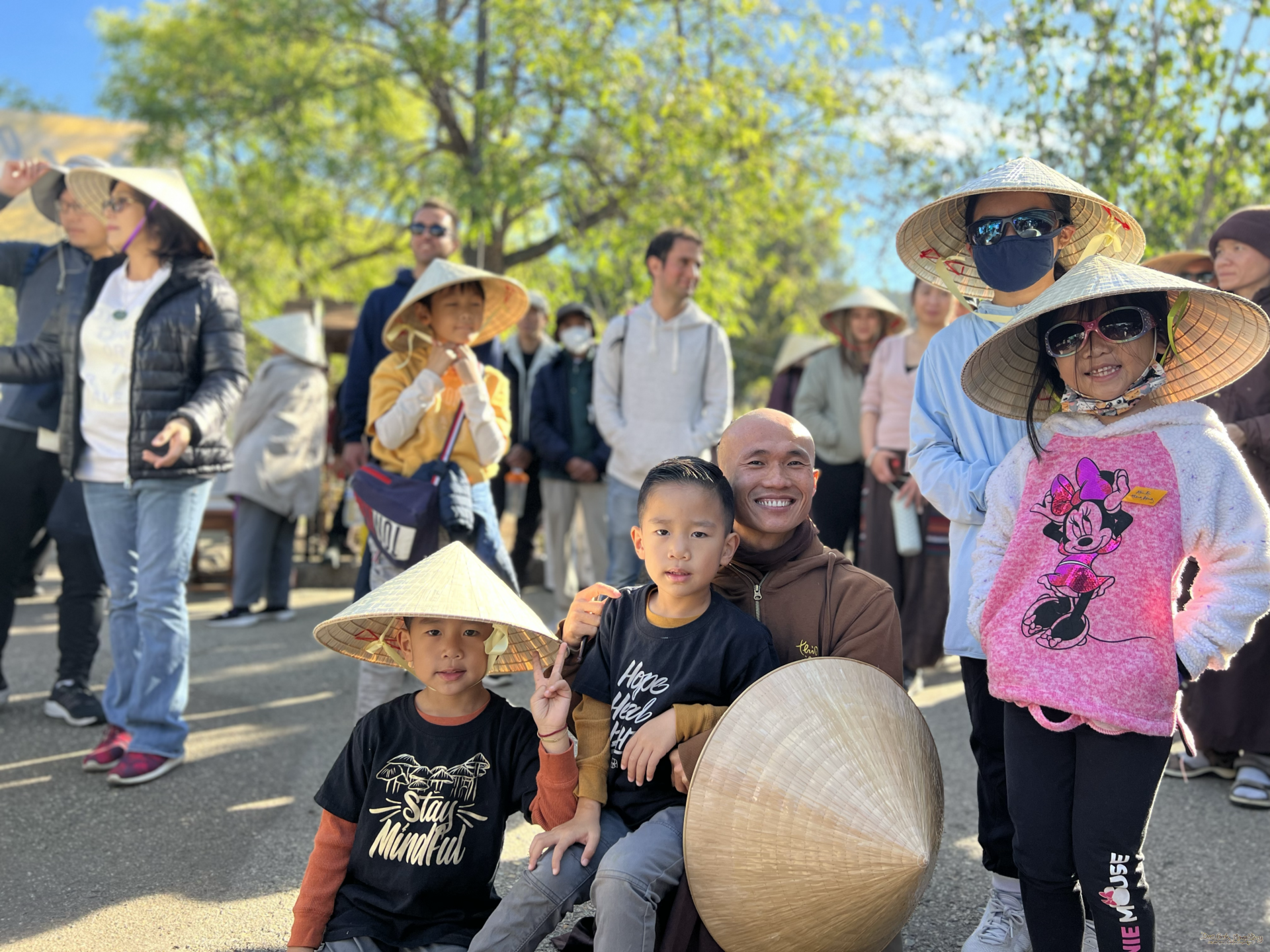By Erica Shane Hamilton on
Psychologist and Order of Interbeing member Erica Shane Hamilton offers insights about healing that goes beyond illness through deepening awareness of the body.
In the “Insight That Brings Us to the Other Shore” we chant, “This Body is not other than Emptiness and Emptiness is not other than this Body.” Several decades ago,
By Erica Shane Hamilton on
Psychologist and Order of Interbeing member Erica Shane Hamilton offers insights about healing that goes beyond illness through deepening awareness of the body.
In the “Insight That Brings Us to the Other Shore” we chant, “This Body is not other than Emptiness and Emptiness is not other than this Body.” Several decades ago, I experienced debilitating, catastrophic, and ultimately life-threatening illness. I experienced firsthand the impermanence of my body and its interdependent nature with the cosmos. During the moments in which I was close to death, I touched the ultimate dimension; perhaps paradoxically, the experience began my journey toward a better understanding of my body and its workings in the historical dimension.
Before I found mindfulness practice in the Plum Village tradition, I had a hard time knowing what I was feeling. Difficult feelings just felt like a ball of ick in my body and mind. Mindfulness practices helped me to identify the nature of my feelings and to recognize how they were manifesting in my body and mind. There were many times during hospitalizations in which I felt strong, overwhelming emotions. Remembering Thầy’s words, I held these feelings of anxiety, fear, and despair with tenderness and love as if they were my crying babies. With this care, my strong emotions began to lose their intensity and to transform into compassion, peace, and loving kindness. The Sangha was also a raft—visits and calls helped me to maintain my practice, even in moments when I felt like I was falling apart.
There were weeks in the hospital during which my doctors did not allow me to eat or drink anything. When I was finally allowed to drink again, it was easy to see the whole cosmos in the simple cup of apple juice I held in my two hands. Every sip was a miracle. Suffering was not enough, as Thầy says; indeed, I had to be in touch with the wonders of life. Being in touch with wonders as simple as breathing and walking in my hospital room sustained my spirit during extremely difficult weeks in the hospital.

In 2001, after I was released from the hospital the first time, Dharma teachers Anh-Huong and Thu Nguyen lovingly gifted me a book and a video on qigong. I had been attending their days of mindfulness and classes at the Mindfulness Practice Center of Fairfax. They also gave me a sheet of paper with one hundred smiley faces and told me to color in a smiley face for every consecutive day of qigong practice. At first I had little energy to do qigong, but I did what I could to carry out the movements. Later, I committed to practicing every day. In that commitment was a deep determination to practice mindfulness wholeheartedly and to care for my body with reverence.
I also practiced deep relaxation, body scans, and mindfulness of the breath. Slowly, these mindfulness practices helped me to truly inhabit my body. I began to develop more precise awareness of what was going on in my body; its diurnal rhythms, its energy levels, its tensions, and its moment-to-moment needs. Mindful movements such as qigong, singing mindfulness songs, being with Sangha, touching gratitude for the wonders of life, joy, and mindful walking in nature all helped to raise my energy levels, which in turn assisted in releasing the tension in my body. I began to develop more precise awareness of what was going on in my body: its diurnal rhythms, its energy levels, its tensions, and its moment-to-moment needs. Mindful awareness of my body at any given moment was vital to my recovery and continues to be important to my health. As I write this, I have now practiced qigong every day for over twenty-two years and work as a qigong instructor. I have been in long-term remission for almost eighteen years, and I gave birth—against medical odds—to a beautiful baby boy eleven years ago.

After I attained long-term remission, I wanted to better understand the dynamics of these complex human bodies we inhabit. I became a psychologist specializing in the subfield of psychophysiology, which is a branch of psychology that emphasizes the biological processes underlying emotions, sensations, mental processes, and behaviors. I developed a practice of mindfulness that includes mindfulness of the levels of energy and tension in my body, also known as “arousal states.” Arousal indicates physiological activation, a readiness to act in response to stimuli in our environments, and it is often linked to emotions and mood. Developing awareness of the changes in the energy and tension in my body and mind has made me a better “gardener,” enabling me to give much nourishment and water to seeds of joy, happiness, love, and peace in my consciousness.
I have observed that when my energy levels are relatively high, my practice of mindfulness deepens. When my energy levels are low, I am more vulnerable to stress and other afflictive states of mind. There are two basic arousal dimensions: energy and tension. The arousal dimension of tension ranges from calmness to stress. The energy arousal dimension ranges from tiredness to energy. Altogether, creating two axes with these dimensions gives us four major arousal states, as described by Dr. Robert Thayer: (1) calm-energy, an optimal arousal state during the daytime, (2) calm-tiredness, akin to being drowsy or groggy (ideal for bedtime), (3) tense-tiredness, a state that is often linked with experiences of anxiety and depression, and (4) tense-energy, a state that can feel like being “wired” and can also be experienced in manifestations of anger, rage, extreme excitement, and even jubilation.1
A few decades ago, Dr. Scott Dickman did research showing that the energy dimension has two sub-dimensions: wakefulness and vigor. Wakefulness ranges from sleepiness to high alertness, whereas vigor ranges from great physical fatigue to high readiness to be physically active. Wakefulness tends to increase throughout the day and peaks in the late afternoon, except for night owls (like myself), who may experience alertness well into the evening. Vigor tends to peak around noon or the hour following it. Many factors influence our levels of energy, including: circadian rhythms, blood sugar levels, exposure to sunshine and electronic blue light, quality of sleep, metabolic processes, medical conditions, medicines, neurotransmitter levels, and sensory profiles.2
As energy decreases, tension has a tendency to increase. This is because our resources, especially those we need for coping, become depleted with decreasing energy. High external and internal stress loads can easily sap our energy levels and increase our tension levels. There are many experiences and factors that can trigger the tense-tiredness state: ruminating states of mind, high social demands, traumatic experiences, social factors such as masking one’s differences, feeling compelled to “code-switch,” and other experiences of being marginalized and/or discriminated against.
In my practice of The Four Foundations of Mindfulness, recognition of my arousal state at any given point in time has been important for mindfulness of my body and mind, especially. A deep understanding of my unique sensory profile helps me to know the kinds of activities that recharge my energy and release my tension, as well as the kinds of activities that drain me and generate tension. I have observed since childhood, for example, that I’m highly sensitive to certain sensory stimuli. Bright, flashing lights, high-pitched frequencies, and noxious fumes tend to trigger unconscious tension in my body (through the limbic system, presumably). I have a strong interoceptive sense; that is, I notice many internal sensations from the organs in my body. I can feel my heart beating without putting my hand on my heart or my pulse. My proprioceptive sense, which employs the many proprioceptor receptors in my muscles, joints, and tendons to help me know where my body is in relation to other objects and the ground, is not quite as strong. My vestibular sense helps me know how to balance and orient my body as I’m walking and doing other activities. All of my senses, especially these three lesser known senses, have a big impact on my arousal states.
Practicing mindfulness of how interoceptive, proprioceptive, and vestibular stimuli affect my body and mind means I often choose to consciously increase or decrease certain sensory stimuli to help bring about a centered, peaceful, and balanced state of being. Gentle rocking, which is a linear vestibular sensory input, helps my mind and body reduce tension. I practice “mindful rocking” in a rocking chair; breathing in while rocking three or four times, and breathing out while rocking three or four times. Qigong, which provides much proprioceptive sensory input, calms my nervous system and reduces tension.
Additionally, I have developed a set of sensory mindful movements related to each of the elements that offers “just right” proprioceptive and vestibular input to soothe the nervous system and energize the body in the tense-tired arousal state. I combine these mindful movements with Brother Pháp Dung’s “Gratitude for the Four Elements” guided meditation. I know that my physical energy tends to dip in late afternoon, and practicing these sensory mindful movements increases my wakefulness and vigor while decreasing tension in my body. While practicing these movements, I can feel my energy stores recharge as my body and mind find peace. After practicing these movements, a mindful walk outdoors in nature helps me to deepen this calm-energetic state.
In this balanced calm-energetic state, I feel safe, free, peaceful, and happy. I notice that deep concentration naturally arises and is often a bridge to more expansive consciousness. The thinking of my mind slows down to a crawl, and my heart reflects the freshness of the flowers outside. Our dear teacher offers this gatha:
There is only the breathing, There is only the walking. There is no breather, There is no walker.3
Experiencing this truth, I am full of gratitude for the ways in which mindfulness continues to support healing that goes far beyond addressing the severe illnesses that brought me to the hospital all those decades ago.
1 Robert E. Thayer, The Biopsychology of Mood and Arousal (New York, NY: Oxford University Press, 1989).
2 Scott J. Dickman, Dimensions of Arousal: Wakefulness and Vigor. Human Factors, Vol. 44, No. 3, Fall 2002, pp. 429-442.
3 Thích Nhất Hạnh, Awakening of the Heart: Essential Buddhist Sutras and Commentaries (Berkeley, CA: Parallax Press, 2011), breathing gatha 4 in the commentary of “The Sutra on the Full Awareness of breathing: A Napanasati Sutta.”


